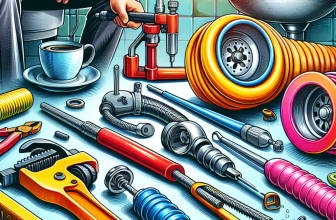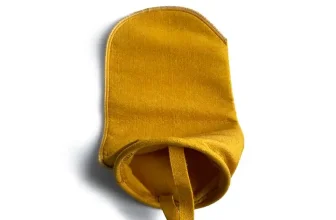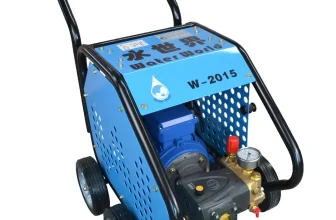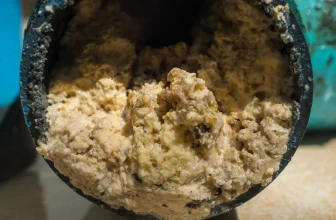Introduction
Sump pumps are specifically designed to remove excess groundwater and rainwater that accumulates around the foundation or in a basement, preventing flooding and water damage.
Typically installed in a sump pit, these pumps automatically activate when the water level rises, pumping the water away from the home and discharging it safely outside.
Ejector pumps: Ejector pumps, also known as sewage pumps, are designed to handle and remove sewage and wastewater from a basement or below-grade bathroom.
These pumps are installed in a sealed pit and feature a grinder mechanism that breaks down solid waste into smaller particles, allowing it to be pumped through a discharge pipe and into a sewer or septic system.
Sump Pumps
Function and purpose
Groundwater and rainwater removal
Sump pumps play a crucial role in keeping basements and crawl spaces dry by actively removing accumulated groundwater and rainwater.
They prevent water from pooling and causing structural damage, mold, and mildew growth.
Preventing basement flooding
By automatically activating when the water level in the sump pit reaches a certain height, sump pumps help prevent basement flooding.
This feature protects the property from potential water damage, maintains the structural integrity of the foundation, and ensures a healthier living environment by reducing the risk of mold and mildew growth.
Key features and components
Float switch
The float switch is an essential component of a sump pump, responsible for detecting the water level in the sump pit. As the water level rises, the float switch activates the pump, allowing it to begin removing water.
Once the water level decreases, the switch deactivates the pump, conserving energy and prolonging the pump’s life.
Pump types
Sump pumps come in two main types – pedestal and submersible. Pedestal pumps have the motor mounted above the pit, keeping it away from water, while submersible pumps have a waterproof motor that sits inside the pit, fully submerged.
Both types have their advantages and disadvantages, with the choice often depending on factors like water volume, space availability, and budget.
Installation and maintenance considerations
Sump pit requirements
The installation of a sump pump requires a sump pit, which is a hole dug in the basement floor to collect water. The size and depth of the pit depend on factors like the type of sump pump, water volume, and local building codes. The pit should be lined with a sump basin to prevent the surrounding soil from collapsing into the pit.
Regular maintenance tasks
Proper maintenance is crucial for the optimal functioning and longevity of a sump pump. Maintenance tasks include checking and cleaning the pump, testing the float switch, and ensuring the discharge pipe is free of debris and obstructions. It is also essential to inspect the backup power source, if applicable, and replace batteries when necessary. Regular maintenance not only prolongs the life of the sump pump but also helps prevent unexpected failures that could lead to basement flooding.
Ejector Pumps
Function and purpose
Sewage and wastewater removal
Ejector pumps are designed to handle and remove sewage and wastewater produced by basement or below-grade bathrooms, laundry rooms, and other plumbing fixtures.
Their primary purpose is to transport waste from lower-level areas to the main sewer line or septic system, ensuring proper sanitation and preventing backflow.
Basement bathroom support
Ejector pumps are crucial for homes with basement bathrooms or plumbing fixtures below the main sewer line. They enable the efficient and safe removal of wastewater from these areas, making it possible to have functional and sanitary below-grade living spaces.
Without an ejector pump, it would be challenging to install plumbing fixtures in basements due to the lack of gravity-assisted waste removal.
Key features and components
Grinder mechanism
Ejector pumps are equipped with a grinder mechanism that breaks down solid waste into smaller particles, allowing the waste to be pumped through the discharge pipe without causing blockages.
The grinder helps prevent clogging and ensures the smooth flow of sewage and wastewater from the basement to the main sewer line or septic system.
Sealed cover
Unlike sump pumps, ejector pumps come with a sealed cover to contain unpleasant odors and gases that may arise from the sewage.
The sealed cover also prevents debris from entering the pit and reduces the risk of hazardous sewer gases leaking into the living space, maintaining a healthy and safe environment.
Installation and maintenance considerations
Sewage pit requirements
Ejector pumps are installed in a dedicated sewage pit, which is a separate hole dug in the basement floor to collect wastewater from plumbing fixtures. The size and depth of the pit depend on factors such as the number of fixtures being serviced, the type of ejector pump, and local building codes.
Similar to sump pits, sewage pits should be lined with a basin to prevent soil collapse and ensure the proper functioning of the pump.
Regular maintenance tasks
To ensure the reliable and efficient operation of an ejector pump, regular maintenance is necessary. Maintenance tasks include inspecting and cleaning the pump, checking the grinder mechanism for wear and tear, testing the float switch, and making sure the discharge pipe is clear of debris and obstructions.
It is important to check for any signs of leaks or damage to the sealed cover. Proper maintenance helps prolong the life of the ejector pump and prevents unexpected failures that could lead to sewage backups and unsanitary conditions in the basement.
Comparing Sump Pumps and Ejector Pump
Similarities
Pumping mechanism
Both sump pumps and ejector pumps rely on similar pumping mechanisms to remove water or wastewater from the basement.
They both use a motor-driven impeller to create suction, which allows them to pump liquid through a discharge pipe and away from the home.
Pit requirements
Both types of pumps require a pit to be dug in the basement floor for installation. While sump pumps are installed in a sump pit specifically for collecting groundwater and rainwater, ejector pumps are installed in a sewage pit designed to collect wastewater from plumbing fixtures.
Both pits need to be lined with a basin to ensure proper functioning and prevent soil collapse.
Differences
Purpose and applications
The primary difference between sump pumps and ejector pumps lies in their purpose and applications. Sump pumps are designed to remove accumulated groundwater and rainwater, preventing basement flooding and water damage.
In contrast, ejector pumps focus on handling and removing sewage and wastewater from basement or below-grade bathrooms, laundry rooms, and other plumbing fixtures, ensuring proper sanitation and preventing backflow.
Components and features
While both pumps share some common features, such as the float switch and motor-driven impeller, there are key differences in their components. Sump pumps do not require a grinder mechanism, as they only handle water.
Ejector pumps, on the other hand, are equipped with a grinder to break down solid waste and a sealed cover to contain odors and gases. These unique features are necessary for the proper handling and removal of sewage and wastewater.
Choosing the Right Pump for Your Needs
Assessing your specific requirements
Basement layout
The layout of your basement, including the presence or absence of below-grade bathrooms or plumbing fixtures, plays a crucial role in determining the type of pump needed. If your primary concern is groundwater or rainwater removal to prevent flooding, a sump pump is the appropriate choice.
However, if you have a basement bathroom or other plumbing fixtures requiring waste removal, an ejector pump becomes necessary.
Water source and volume
Assessing the water source and volume that your basement is exposed to is essential for choosing the right pump. If your basement frequently experiences high water levels from heavy rainfall or a high water table, a more powerful sump pump may be required to handle the volume.
Conversely, if you have multiple plumbing fixtures in the basement generating significant wastewater, you’ll need an ejector pump with sufficient capacity to manage the waste effectively.
Cost considerations
Initial investment
The cost of purchasing and installing a sump pump or ejector pump can vary depending on factors such as the pump type, brand, and capacity. Generally, ejector pumps tend to be more expensive due to their grinder mechanism and sealed cover.
When selecting a pump, it’s essential to balance your budget with the specific requirements of your basement to ensure efficient and reliable performance.
Maintenance and replacement expenses
Both sump pumps and ejector pumps require regular maintenance to ensure optimal functioning and prolong their lifespan. However, the costs associated with maintenance tasks, such as cleaning, component replacement, and professional servicing, can vary between the two pump types.
The cost of replacing a pump when it reaches the end of its useful life should be considered. Understanding these costs will help you make an informed decision when choosing the right pump for your needs.
Conclusion
Importance of selecting the appropriate pump
Ensuring optimal performance
Choosing the right pump for your specific needs is crucial for maintaining the desired level of performance, whether it is preventing basement flooding or efficiently removing sewage and wastewater from below-grade plumbing fixtures.
Protecting your investment
By selecting the appropriate pump, you can protect your home from potential water damage, preserve the structural integrity of your property, and maintain a healthy living environment. Making the right choice helps prevent costly repairs and replacements in the long run, ultimately protecting your investment.
Recap of key differences and considerations
Purpose and applications
Remember that sump pumps are designed for removing groundwater and rainwater to prevent basement flooding, while ejector pumps focus on handling and removing sewage and wastewater from below-grade plumbing fixtures.
Components and features
Sump pumps generally do not require a grinder mechanism or sealed cover, whereas ejector pumps are equipped with these features to handle solid waste and contain odors and gases.
Assessing requirements
Consider the layout of your basement, including the presence of below-grade bathrooms or plumbing fixtures, and the volume of water or wastewater your basement is exposed to when choosing a pump.
Cost considerations
Keep in mind the costs associated with the initial investment, maintenance, and replacement of the pump, and balance your budget with your specific needs to ensure the most efficient and reliable performance.







